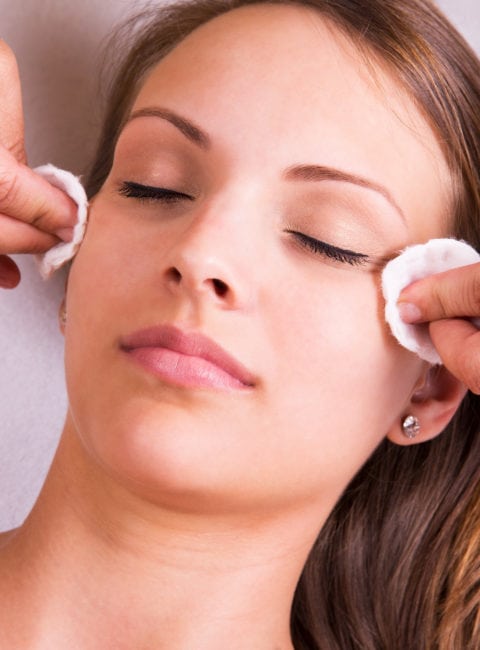What is better? Chemical Peel or Laser?
A common question I get from patients is, “What’s better—a chemical peel or laser?” The short answer is. BOTH are effective, if done properly by a board certified surgeon or doctor. Both treatments are indicated for resurfacing the skin.
When we talk about strategies to treat the signs of an aging face, all the options fall into one of three categories. We can Relax the muscles and thus soften the wrinkles caused by muscle overactivity. Botox, Dysport and Xeomen are examples of this strategy. Or we can Redrape. This is surgical resuspension of facial tissue to more youthful position and is the most dramatic option. Finally, we can resurface the skin, and this strategy includes chemical peels, lasers, and dermabrasion.
First, what are the indications for resurfacing the skin? Common reasons to consider getting resurfacing include dyschromia (or pigmentation problems), actinic keratoses, melasma, seborrheic keratosis, and wrinkles. Once the proper indication for resurfacing is confirmed, the next question is what resurfacing option to choose. As I stated earlier, the options include chemical peels, laser resurfacing, and dermabrasion. In my opinion, the realistic options really include just laser and chemical peels. Dermabrasion is an effective option, BUT only in experienced hands. Dermabrasion uses a fine sanding machine and is extremely technique dependent. I feel this option carries a much higher risk of complications, and my observation is many of today’s doctors offering cosmetic surgery did not get adequate training or exposure. If your provider does offer dermabrasion, make sure you ask how many cases they have performed and ask to see their results.
Both chemical peels and laser can achieve fantastic results. One is not better than the other, and results are dependent on the provider’s experience. Both techniques remove the upper layer of the skin (epidermis and upper dermis). Chemical peels achieve this via a chemical burn mechanism. Lasers achieve this via a thermal burn mechanism. Thus, both techniques essentially do the same thing but using different mechanisms. It’s also important to remember that the chemical peel or laser doesn’t produce the smoothening or improved pigmentation of the skin. They merely take off the top layer of skin. It is the resulting regrowth and remodeling of collagen that ultimately achieves the results one is looking for. That is why I inform patients it takes at least three months before we see the results.
While both chemical peels and lasers achieve similar results, there are advantages and disadvantages to each technique. It is undeniable that lasers sound more “advanced” and imply it being better. One advantage of employing advanced technology means a laser is more accurate. The current popular fractionated lasers offer the cosmetic surgeon/doctor the ability to precisely determine spot size, power, depth, density and other factors. Fractionated lasers also offer much quicker recovery than older lasers and deeper chemical peels. The micrometers of normal skin not treated by lasers (not visible to the naked eye) allow for quicker recovery. One must also realize that there are different types of lasers (CO2, Erbium-YAG, pulsed dye, flash pump, argon, alexandrite, etc). All these lasers have different wavelengths and different indications. Thus, not “one” laser will treat all the common facial aging signs. Another disadvantage of laser is cost. Lasers are very expensive equipments and, understandably, will cost more for the patient. Another relative disadvantage is these tend to be more painful. However, with good topical anesthesia and using a device to blow ice-cold air on the skin, the pain is decreased and most patients tolerate even CO2 lasers well in clinic.
Chemical peels are also effective in treating wrinkles, sun damage discoloration, and various skin growths (ie keratoses). One advantage of chemical peels is a simple selection protocol. Very light chemical peels can improve skin texture, solar lentigenes (freckles), and even melasma. Light chemical peels can treat actinic keratoses, thin seborrheic keratoses, and even improve skin texture. If one wants to improve wrinkles and achieve greater improvement in freckles, melasma, etc, then a medium or deep chemical peel can be used. Another advantage of chemical peels is they are less expensive. Generally, they are less painful, but the deeper chemical peels (ie phenol) can be very painful as well and will need some anesthesia such as sedation. One disadvantage of chemical peels is it is more operator dependent compared to lasers. In order for chemical peels to achieve good results, the doctor must first properly select the appropriate chemical to use. Then the application of the chemical peel must be done properly, with the doctor understanding what visible signs to look for as he/she applies the chemical. Finally—when comparing the deep chemical peels to fractionated CO2 lasers—chemical peels may have a longer recovery.
In summary, both chemical peels and lasers offer comparable results, but both must be properly selected and proper techniques practiced by the doctor. It’s important that you see a board certified cosmetic surgeon or doctor so that he or she can perform a good in office skin exam and then discuss the merits of each procedure. Just as chemical peels and lasers have their pros and cons, each patient’s situation is different. What may be better for one patient may not apply to another.
Dr. Kenneth Yu Facial Plastic and Reconstructive Surgery, in San Antonio Texas, has a qualified team of experts that are Board Certified. To schedule a consultation, please contact our Concierge Patient Coordinator at (210) 876-6868 or info@dryuplasticsurgery.com.


